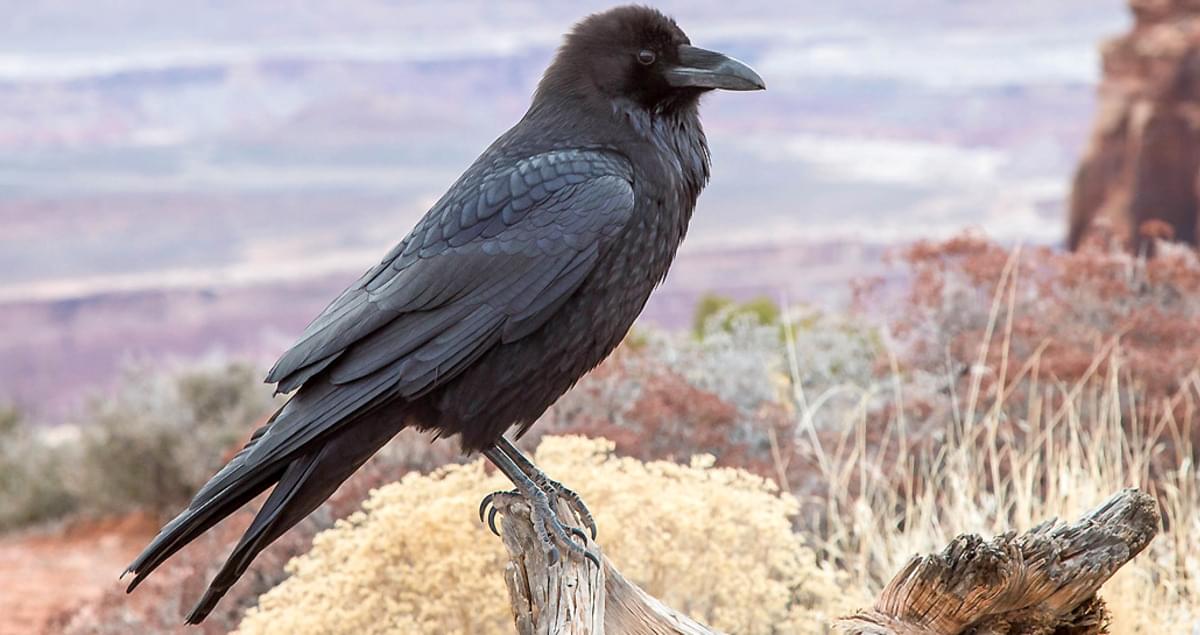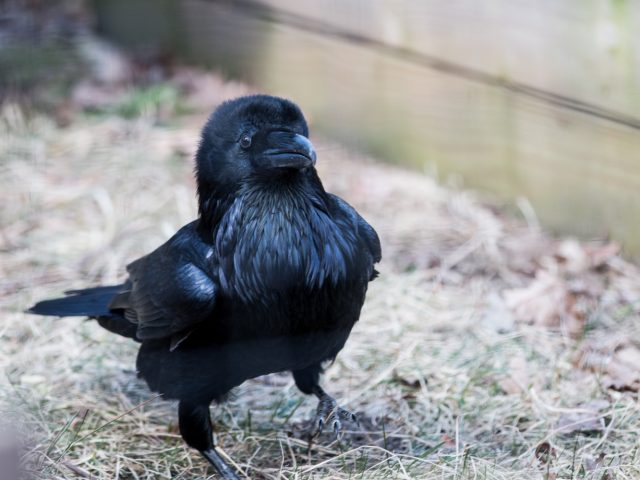

This is not to say ravens fear Peregrines. Only Peregrine Falcons are tolerated/respected enough to be allowed to nest nearby.

Ravens will even drive off other ravens if local foraging opportunities are slim. Nesting territories are guarded year round. Unlike raptors, who are seldom able to successfully raise more than 1 chick, ravens routinely succeed at raising 80-100% of the entire clutch to adulthood. Upon hatching, ravens are helpless and require feeding every ½ hour which literally keeps both parents hopping. When a potential threat nears, the male raven will do everything he can to lead the invader away from the nest. The female lays 2-7 eggs and does the majority of the 3-week incubation herself, and the male diligently assists by feeding her while she sets on the nest. They will continually use the same nest even after a disturbance or a failed clutch. Ravens mate for life and are one of the few truly monogamous species of songbirds. At any time of the year, a pair can be found sitting side by side in a tree cooing softly to each other as they preen one another or "Eskimo Kiss" using their long heavy beaks. Pairs will often fly with wingtips touching even while performing barrel rolls or other aerobatics. Ravens are especially romantic during the breeding season. Ravens can hold their own (oftentimes through strength in numbers) against eagles, hawks, falcons, condors and vultures. Ironically, ravens are only forced to yield the sky to smaller more agile birds like swallows and blackbirds. They can, and do, eat anything including: carrion, rodents, insects, reptiles, amphibians, grass seeds, berries, fruit, nuts, shellfish, other bird eggs, human trash, and if hungry enough-mammal dung. She pulls the door open again and together they fly off to share the prize. Once inside the male rummages around for a good piece of food and signals his mate. The female, who is larger and heavier, usually pulls the mailbox-like metal trapdoor open so that the male can fly through the open door. Here at Bryce Canyon we have observed mated pairs teaming up to steal food from our bear-proof garbage cans. Since they are very intelligent birds that teach their young the tricks they learned, it's easy to imagine how this relationship was fostered over the years. For generations, Inuit have rewarded such ravens by leaving the liver or other choice cuts of moose meat. When hunting, Inuit American Indians use ravens for aerial reconnaissance claiming that the birds lead them to moose. Then, all birds return to their perch where the thief shares the prize with those who ran interference. Yet, instead of graciously waiting their turn at the carcass, the ravens will torment the predator, 3 or 4 of them keeping it busy while another steals a hunk of meat. The large predator, being capable of ripping through the dead animal's thick hide, makes the meat and internal organs accessible to the ravens. Eventually, a large predator like a bear will answer the summons. Upon discovering a winter-killed deer, ravens will find a nearby perch and begin squawking, drawing more and more ravens who join the chorus.

Ravens have been observed communicating ideas, not only to each other, but also to members of other species. Some researchers believe that ravens have a rudimentary language. Ravens are very intelligent and capable birds. Ravens are found in almost every biome in North America, Europe, and Asia but tend to avoid large human populations and agricultural lands (environments crows tend to prefer). Athough the Common Crow is similar in appearance, it's about half the size of a raven. The Common Raven, Corvus corax, is the largest species of all the world's songbirds with wingspans of 48" and body lengths of 24".


 0 kommentar(er)
0 kommentar(er)
